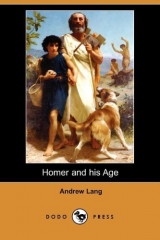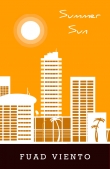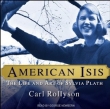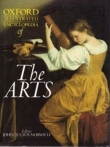
Текст книги "Homer and His Age"
Автор книги: Andrew Lang
Жанры:
История
,сообщить о нарушении
Текущая страница: 2 (всего у книги 18 страниц) [доступный отрывок для чтения: 7 страниц]
CHAPTER II
HYPOTHESES AS TO THE GROWTH OF THE EPICS
A theorist who believes that the Homeric poems are the growth of four changeful centuries, must present a definite working hypothesis as to how they escaped from certain influences of the late age in which much of them is said to have been composed. We must first ask to what manner of audiences did the poets sing, in the alleged four centuries of the evolution of the Epics. Mr. Leaf, as a champion of the theory of ages of "expansion," answers that "the Iliadand Odysseyare essentially, and above all, Court poems. They were composed to be sung in the palaces of a ruling aristocracy ... the poems are aristocratic and courtly, not popular." {Footnote: Companion to the Iliad, pp. 2,8. 1892.} They are not Volkspoesie; they are not ballads. "It is now generally recognised that this conception is radically false."
These opinions, in which we heartily agree—there never was such a
thing as a "popular" Epic—were published fourteen years ago. Mr.
Leaf, however, would not express them with regard to "our" Iliadand
Odyssey, because, in his view, a considerable part of the Iliad, as
it stands, was made, not by Court bards in the Achaean courts of Europe,
not for an audience of noble warriors and dames, but by wandering
minstrels in the later Ionian colonies of Asia. They did not chant for a
military aristocracy, but for the enjoyment of town and country folk at
popular festivals. {Footnote: Iliad, vol. i. p. xvi. 1900.} The poems
were begun, indeed, he thinks, for "a wealthy aristocracy living
on the product of their lands," in European Greece; were begun by
contemporary court minstrels, but were continued, vastly expanded, and
altered to taste by wandering singers and reciting rhapsodists, who
amused the holidays of a commercial, expansive, and bustling Ionian
democracy. {Footnote: Companion to the Iliad, p. II.}
We must suppose that, on this theory, the later poets pleased a
commercial democracy by keeping up the tone that had delighted an old
land-owning military aristocracy. It is not difficult, however, to admit
this as possible, for the poems continued to be admired in all ages of
Greece and under every form of society. The real question is, would the
modern poets be the men to keep up a tone some four or five centuries
old, and to be true, if they were true, to the details of the heroic
age? "It is not beyond the bounds of possibility that some part of the
most primitive Iliadmay have been actually sung by the court minstrel
in the palace whose ruins can still be seen in Mycenae." {Footnote:
Leaf, Iliad, vol. i. p. xv.} But, by the expansionist theory, even
the oldest parts of our Iliadare now full of what we may call quite
recent Ionian additions, full of late retouches, and full, so to speak,
of omissions of old parts.
Through four or five centuries, by the hypothesis, every singer who could find an audience was treating as much as he knew of a vast body of ancient lays exactly as he pleased, adding here, lopping there, altering everywhere. Moreover, these were centuries full of change. The ancient Achaean palaces were becoming the ruins which we still behold. The old art had faded, and then fallen under the disaster of the Dorian conquest. A new art, or a recrudescence of earlier art, very crude and barbaric, had succeeded, and was beginning to acquire form and vitality. The very scene of life was altered: the new singers and listeners dwelt on the Eastern side of the Aegean. Knights no longer, as in Europe, fought from chariots: war was conducted by infantry, for the most part, with mounted auxiliaries. With the disappearance of the war chariot the huge Mycenaean shields had vanished or were very rarely used. The early vase painters do not, to my knowledge, represent heroes as fighting from war chariots. They had lost touch with that method. Fighting men now carried relatively small round bucklers, and iron was the metal chiefly employed for swords, spears, and arrow points. Would the new poets, in deference to tradition, abstain from mentioning cavalry, or small bucklers, or iron swords and spears? or would they avoid puzzling their hearers by speaking of obsolete and unfamiliar forms of tactics and of military equipment? Would they therefore sing of things familiar—of iron weapons, small round shields, hoplites, and cavalry? We shall see that confused and self-contradictory answers are given by criticism to all these questions by scholars who hold that the Epics are not the product of one, but of many ages.
There were other changes between the ages of the original minstrel and of the late successors who are said to have busied themselves in adding to, mutilating, and altering his old poem. Kings and courts had passed away; old Ionian myths and religious usages, unknown to the Homeric poets, had come out into the light; commerce and pleasure and early philosophies were the chief concerns of life. Yet the poems continued to be aristocratic in manners; and, in religion and ritual, to be pure from recrudescences of savage poetry and superstition, though the Ionians "did not drop the more primitive phases of belief which had clung to them; these rose to the surface with the rest of the marvellous Ionic genius, and many an ancient survival was enshrined in the literature or mythology of Athens which had long passed out of all remembrance at Mycenas." {Footnote: Companion to the Iliad, p. 7.}
Amazing to say, none of these "more primitive phases of belief," none of the recrudescent savage magic, was intruded by the late Ionian poets into the Iliad which they continued, by the theory. Such phases of belief were, indeed, by their time popular, and frequently appeared in the Cyclic poems on the Trojan war; continuations of the ILIAD, which were composed by Ionian authors at the same time as much of the ILIADitself (by the theory) was composed. The authors of these Cyclic poems—authors contemporary with the makers of much of the ILIAD– wereeminently "un-Homeric" in many respects. {Footnote: Cf. Monro, The Cyclic Poets; Odyssey, vol. ii, pp. 342-384.} They had ideas very different from those of the authors of the Iliadand ODYSSEY, as these ideas have reached us.
Helbig states this curious fact, that the Homeric poems are free from many recent or recrudescent ideas common in other Epics composed during the later centuries of the supposed four hundred years of Epic growth. {Footnote: Homerische Epos, p. 3.} Thus a signet ring was mentioned in the Ilias Puma, and there are no rings in Iliador Odyssey. But Helbig does not perceive the insuperable difficulty which here encounters his hypothesis. He remarks: "In certain poems which were grouping themselves around the Iliad andOdyssey, we meet data absolutely opposed to the conventional style of the Epic." He gives three or four examples of perfectly un-Homeric ideas occurring in Epics of the eighth to seventh centuries, B.C., and a large supply of such cases can be adduced. But Helbig does not ask how it happened that, if poets of these centuries had lost touch with the Epic tradition, and had wandered into a new region of thought, as they had, examples of their notions do not occur in the Iliadand Odyssey. By his theory these poems were being added to and altered, even in their oldest portions, at the very period when strange fresh, or old and newly revived fancies were flourishing. If so, how were the Iliadand Odyssey, unlike the Cyclic poems, kept uncontaminated, as they confessedly were, by the new romantic ideas?
Here is the real difficulty. Cyclic poets of the eighth and seventh centuries had certainly lost touch with the Epic tradition; their poems make that an admitted fact. Yet poets of the eighth to seventh centuries were, by the theory, busily adding to and altering the ancient lays of the Iliad. How did theyabstain from the new or revived ideas, and from the new genreof romance? Are we to believe that one set of late Ionian poets—they who added to and altered the Iliad—were true to tradition, while another contemporary set of Ionian poets, the Cyclics—authors of new Epics on Homeric themes—are known to have quite lost touch with the Homeric taste, religion, and ritual? The reply will perhaps be a Cyclic poet said, "Here I am going to compose quite a new poem about the old heroes. I shall make them do and think and believe as I please, without reference to the evidence of the old poems." But, it will have to be added, the rhapsodists of 800-540 B.C., and the general editor of the latter date, thought, weare continuing an old set of lays, and we must be very careful in adhering to manners, customs, and beliefs as described by our predecessors. For instance, the old heroes had only bronze, no iron,—and then the rhapsodists forgot, and made iron a common commodity in the Iliad. Again, the rhapsodists knew that the ancient heroes had no corslets—the old lays, we learn, never spoke of corslets—but they made them wear corslets of much splendour. {Footnote: The reader must remember that the view of the late poets as careful adherents of tradition in usages and ideas only obtains sometimes; at others the critics declare that archaeological precision is notpreserved, and that the Ionic continuators introduced, for example, the military gear of their own period into a poem which represents much older weapons and equipments.} This theory does not help us. In an uncritical age poets could not discern that their genre of romance and religion was alien from that of Homer.
To return to the puzzle about the careful and precise continuators of the Iliad, as contrasted with their heedless contemporaries, the authors of the Cyclic poems. How "non-Homeric" the authors of these Cyclic poems were, before and after 660 B.C., we illustrate from examples of their left hand backslidings and right hand fallings off. They introduced (1) The Apotheosis of the Dioscuri, who in Homer ( Iliad, III. 243) are merely dead men ( Cypria). (2) Story of Iphigenia Cypria. (3) Story of Palamedes, who is killed when angling by Odysseus and Diomede (Cypria).
Homer's heroes never fish, except in stress of dire necessity, in the Odyssey, and Homer's own Diomede and Odysseus would never stoop to assassinate a companion when engaged in the contemplative man's recreation. We here see the heroes in late degraded form as on the Attic stage. (4) The Cyclics introduce Helen as daughter of Nemesis, and describe the flight of Nemesis from Zeus in various animal forms, a Mдrchen of a sort not popular with Homer; an Ionic Mдrchen, Mr. Leaf would say. There is nothing like this in the Iliad and Odyssey. (5) They call the son of Achilles, not Neoptolemus, as Homer does, but Pyrrhus. (6) They represent the Achaean army as obtaining supplies through three magically gifted maidens, who produce corn, wine, and oil at will, as in fairy tales. Another Ionic non-Achaean Mдrchen! They bring in ghosts of heroes dead and buried. Such ghosts, in Homer's opinion, were impossible if the dead had been cremated. All these non-Homeric absurdities, save the last, are from the Cypria, dated by Sir Richard Jebb about 776 B.C., long before the Odyssey was put into shape, namely, after 660 B. C. in his opinion. Yet the alleged late compiler of the Odyssey, in the seventh century, never wanders thus from the Homeric standard in taste. What a skilled archaeologist he must have been! The author of the Cypria knew the Iliad, {Footnote: Monro, Odyssey, vol. ii. p. 354.} but his knowledge could not keep him true to tradition. (7) In the AEthiopis (about 776 B.C.) men are made immortal after death, and are worshipped as heroes, an idea foreign to Iliad and Odyssey. (8) There is a savage ritual of purification from blood shed by a homicide (compare Eumenides, line 273). This is unheard of in Iliad and Odyssey, though familiar to Aeschylus. (9) Achilles, after death, is carried to the isle of Leuke. (10) The fate of Ilium, in the Cyclic Little Iliad, hangs on the Palladium, of which nothing is known in Iliador Odyssey. The Little Iliadis dated about 700 B.C. (11) The Nostoimentions Molossians, not named by Homer (which is a trifle); it also mentions the Asiatic city of Colophon, an Ionian colony, which is not a trivial self-betrayal on the part of the poet. He is dated about 750 B.C.
Thus, more than a century before the Odysseyreceived its final form, after 660 B.C., from the hands of one man (according to the theory), the other Ionian poets who attempted Epic were betraying themselves as non-Homeric on every hand. {Footnote: Monro, Odyssey, vol. ii. pp. 347-383.}
Our examples are but a few derived from the brief notices of the Cyclic poets' works, as mentioned in ancient literature; these poets probably, in fact, betrayed themselves constantly. But their contemporaries, the makers of late additions to the Odyssey, and the later mosaic worker who put it together, never betrayed themselves to anything like the fatal extent of anachronism exhibited by the Cyclic poets. How, if the true ancient tone, taste, manners, and religion were lost, as the Cyclic poets show that they were, did the contemporary Ionian poets or rhapsodists know and preserve the old manner?
The best face we can put on the matter is to say that all the Cyclic poets were recklessly independent of tradition, while all men who botched at the Iliadwere very learned, and very careful to maintain harmony in their pictures of life and manners, except when they introduced changes in burial, bride-price, houses, iron, greaves, and corslets, all of them things, by the theory, modern, and when they sang in modern grammar.
Yet despite this conscientiousness of theirs, most of the many authors of our Iliadand Odysseywere, by the theory, strolling irresponsible rhapsodists, like the later jongleursof the thirteenth and fourteenth centuries in mediaeval France. How could these strollers keep their modern Ionian ideas, or their primitive, recrudescent phases of belief, out of their lays, as far as they didkeep them out, while the contemporary authors of the Cypria, The Sack of Ilios, and other Cyclic poets were full of new ideas, legends, and beliefs, or primitive notions revived, and, save when revived, quite obviously late and quite un-Homeric in any case?
The difficulty is the greater if the Cyclic poems were long poems, with one author to each Epic. Such authors were obviously men of ambition; they produced serious works de longue haleine. It is from them that we should naturally expect conservative and studious adhesion to the traditional models. From casual strollers like the rhapsodists and chanters at festivals, we look for nothing of the sort. Theymight be expected to introduce great feats done by sergeants and privates, so to speak—men of the nameless {Greek: laos}, the host, the foot men—who in Homer are occasionally said to perish of disease or to fall under the rain of arrows, but are never distinguished by name. The strollers, it might be thought, would also be the very men to introduce fairy tales, freaks of primitive Ionian myth, discreditable anecdotes of the princely heroes, and references to the Ionian colonies.
But it is not so; the serious, laborious authors of the long Cyclic poems do such un-Homeric things as these; the gay, irresponsible strolling singers of a lay here and a lay there—lays now incorporated in the Iliadand Odyssey—scrupulously avoid such faults. They never even introduce a signet ring. These are difficulties in the theory of the Iliadas a patchwork by many hands, in many ages, which nobody explains; which, indeed, nobody seems to find difficult. Yet the difficulty is insuperable. Even if we take refuge with Wilamowitz in the idea that the Cyclic and Homeric poems were at first mere protoplasm of lays of many ages, and that they were all compiled, say in the sixth century, into so many narratives, we come no nearer to explaining why the tone, taste, and ideas of two such narratives—Illiad and Odyssey—are confessedly distinct from the tone, taste, and ideas of all the others. The Cyclic poems are certainly the production of a late and changed age? {Footnote: For what manner of audience, if not for readers, the Cyclic poems were composed is a mysterious question.} The Iliadis not in any degree—save perhaps in a few interpolated passages—touched by the influences of that late age. It is not a complex of the work of four incompatible centuries, as far as this point is concerned—the point of legend, religion, ritual, and conception of heroic character.
CHAPTER III
HYPOTHESES OF EPIC COMPOSITION
Whosoever holds that the Homeric poems were evolved out of the lays of many men, in many places, during many periods of culture, must present a consistent and logical hypothesis as to how they attained their present plots and forms. These could not come by accident, even if the plots are not good—as all the world held that they were, till after Wolf's day—but very bad, as some critics now assert. Still plot and form, beyond the power of chance to produce, the poems do possess. Nobody goes so far as to deny that; and critics make hypotheses explanatory of the fact that a single ancient "kernel" of some 2500 lines, a "kernel" altered at will by any one who pleased during four centuries, became a constructive whole. If the hypotheses fail to account for the fact, we have the more reason to believe that the poems are the work of one age, and, mainly, of one man.
In criticising Homeric criticism as it is to-day, we cannot do better than begin by examining the theories of Mr. Leaf which are offered by him merely as "a working hypothesis." His most erudite work is based on a wide knowledge of German Homeric speculation, of the exact science of Grammar, of archaeological discoveries, and of manuscripts. {Footnote: The Iliad. Macmillan & Co. 1900, 1902.} His volumes are, I doubt not, as they certainly deserve to be, on the shelves of every Homeric student, old or young, and doubtless their contents reach the higher forms in schools, though there is reason to suppose that, about the unity of Homer, schoolboys remain conservative.
In this book of more than 1200 pages Mr. Leaf's space is mainly devoted to textual criticism, philology, and pure scholarship, but his Introductions, Notes, and Appendices also set forth his mature ideas about the Homeric problem in general. He has altered some of his opinions since the publication of his Companion to the Iliad(1892), but the main lines of his old system are, except on one crucial point, unchanged. His theory we shall try to state and criticise; in general outline it is the current theory of separatist critics, and it may fairly be treated as a good example of such theories.
The system is to the following effect: Greek tradition, in the classical period, regarded the Iliadand Odysseyas the work of one man, Homer, a native of one or other of the Ionian colonies of Asia Minor. But the poems show few obvious signs of origin in Asia. They deal with dwellers, before the Dorian invasion (which the poet never alludes to), on the continent of Europe and in Crete. {Footnote: If the poet sang after the tempest of war that came down with the Dorians from the north, he would probably have sought a topic in the Achaean exploits and sorrows of that period. The Dorians, not the Trojans, would have been the foes. The epics of France of the eleventh and twelfth centuries dwell, not on the real victories of the remote Charlemagne so much as on the disasters of Aliscans and Roncesvaux—defeats at Saracen hands, Saracens being the enemies of the twelfth-century poets. No Saracens, in fact, fought at Roncesvaux.} The lays are concerned with "good old times"; presumably between 1500 and 1100 B.C. Their pictures of the details of life harmonise more with what we know of the society of that period from the evidence of buildings and recent excavations, than with what we know of the life and the much more rude and barbaric art of the so-called "Dipylon" period of "geometrical" ornament considerably later. In the Dipylon age though the use of iron, even for swords (made on the lines of the old bronze sword), was familiar, art was on a most barbaric level, not much above the Bed Indian type, as far, at least, as painted vases bear witness. The human figure is designed as in Tommy Traddles's skeletons; there is, however, some crude but promising idea of composition.
The picture of life in the Homeric poems, then, is more like that of, say, 1500-1100 B.C. than of, say, 1000-850 B.C. in Mr. Leaf's opinion. Certainly Homer describes a wealthy aristocracy, subject to an Over-Lord, who rules, by right divine, from "golden Mycenae." We hear of no such potentate in Ionia. Homer's accounts of contemporary art seem to be inspired by the rich art generally dated about 1500-1200. Yet there are "many traces of apparent anachronism," of divergence from the more antique picture of life. In these divergences are we to recognise the picture of a later development of the ancient existence of 1500-1200 B.C.? Or have elements of the life of a much later age of Greece (say, 800-550 B.C.) been consciously or unconsciously introduced by the late poets? Here Mr. Leaf recognises a point on which we have insisted, and must keep insisting, for it is of the first importance. "It is a priorithe most probable" supposition that, "in an uncritical age," poets do not"reproduce the circumstances of the old time," but "only clothe the old tale in the garb of their own days." Poets in an uncritical age always, in our experience, "clothe old tales with the garb of their own time," but Mr. Leaf thinks that, in the case of the Homeric poems, this idea "is not wholly borne out by the facts."
In fact, Mr. Leaf's hypothesis, like Helbig's, exhibits a come-and-go between the theory that his late poets clung close to tradition and so kept true to ancient details of life, and the theory that they did quite the reverse in many cases. Of this frequent examples will occur. He writes, "The Homeric period is certainly later than the shaft tombs" (discovered at Mycenae by Dr. Schliemann), "but it does not necessarily follow that it is post-Mycenaean. It is quite possible that certain notable differences between the poems and the monuments" (of Mycenae) "in burial, for instance, and in women's dress may be due to changes which arose within the Mycenaean age itself, in that later part of it of which our knowledge is defective—almost as defective as it is of the subsequent 'Dipylon' period. On the whole, the resemblance to the typical Mycenaean culture is more striking than the difference." {Footnote: Leaf, Iliad, vol. i. pp. xiii.-xv. 1900.}
So far Mr. Leaf states precisely the opinion for which we argue. The Homeric poems describe an age later than that of the famous tombs—so rich in relics—of the Mycenaean acropolis, and earlier than the tombs of the Dipylon of Athens. The poems thus spring out of an age of which, except from the poems themselves, we know little or nothing, because, as is shown later, no cairn burials answering to the frequent Homeric descriptions have ever been discovered—so relics corroborating Homeric descriptions are to seek. But the age attaches itself in many ways to the age of the Mycenaean tombs, while, in our opinion, it stands quite apart from the post-Dorian culture.
Where we differ from Mr. Leaf is in believing that the poems, as wholes, were composed in that late Mycenaean period of which, from material remains, we know very little; that "much new" was not added, as he thinks, in "the Ionian development" which lasted perhaps "from the ninth century B.C. to the seventh." We cannot agree with Mr. Leaf, when he, like Helbig, thinks that much of the detail of the ancient life in the poems had early become so "stereotyped" that no continuator, however late, dared "intentionally to sap" the type, "though he slipped from time to time into involuntary anachronism." Some poets are also asserted to indulge in voluntaryanachronism when, as Mr. Leaf supposes, they equip the ancient warriors with corslets and greaves and other body armour of bronze such as, in his opinion, the old heroes never knew, such as never were mentioned in the oldest parts or "kernel" of the poems. Thus the traditional details of Mycenaean life sometimes are regarded as "stereotyped" in poetic tradition; sometimes as subject to modern alterations of a sweeping and revolutionary kind.
As to deliberate adherence to tradition by the poets, we have proved that the Cyclic epic poets of 800-660 B.C. wandered widely from the ancient models. If, then, every minstrel or rhapsodist who, anywhere, added at will to the old "kernel" of the Achilleswas, so far as he was able, as conscientiously precise in his stereotyped archaeological details as Mr. Leaf sometimes supposes, the fact is contrary to general custom in such cases. When later poets in an uncritical age take up and rehandle the poetic themes of their predecessors, they always give to the stories "a new costume," as M. Gaston Paris remarks in reference to thirteenth century dealings with French epics of the eleventh century. But, in the critics' opinion, the late rehandlers of old Achaean lays preserved the archaic modes of life, war, costume, weapons, and so forth, with conscientious care, except in certain matters to be considered later, when they deliberately did the very reverse. Sometimes the late poets devoutly follow tradition. Sometimes they deliberately innovate. Sometimes they pedantically "archaise," bringing in genuine, but by their time forgotten, Mycenaean things, and criticism can detect their doings in each case.
Though the late continuators of the Iliadwere able, despite certain inadvertencies, to keep up for some four centuries in Asia the harmonious picture of ancient Achaean life and society in Europe, critics can distinguish four separate strata, the work of many different ages, in the Iliad. Of the first stratum composed in Europe, say about 1300-1150 B.C. (I give a conjectural date under all reserves), the topic was THE Wrath of ACHILLES. Of this poem, in Mr. Leaf's opinion, (a) the First Book and fifty lines of the Second Book remain intact or, perhaps, are a blend of two versions. (b) The Valour of Agamemnonand Defeat of THE Achaeans. Of this there are portions in Book XI., but they were meddled with, altered, and generally doctored, "down to the latest period," namely, the age of Pisistratus in Athens, the middle of the sixth century B.C. (c) The fight in which, after their defeat, the Achaeans try to save the ships from the torch of Hector, and the Valour of Patroclus(but some critics do not accept this), with his death (XV., XVI. in parts). (d) Some eighty lines on the ARMING OF ACHILLES(XIX.). (e) Perhaps an incident or two in Books XX., XXI. (f) The Slaying HECTORby Achilles, in Books XXI., XXII. (but some of the learned will not admit this, and we shall, unhappily, have to prove that, if Mr. Leaf's principles be correct, we really know nothing about the SLAYING OF HECTORin its original form).
Of these six elements only did the original poem consist, Mr. Leaf thinks; a rigid critic will reject as original even the Valour of Patroclusand the DEATH OF HECTOR, but Mr. Leaf refuses to go so far as that. The original poem, as detected by him, is really "the work of a single poet, perhaps the greatest in all the world's history." If the original poet did no more than is here allotted to him, especially if he left out the purpose of Zeus and the person of Thetis in Book I., we do not quite understand his unapproachable greatness. He must certainly have drawn a rather commonplace Achilles, as we shall see, and we confess to preferring the Iliadas it stands.
The brief narrative cut out of the mass by Mr. Leaf, then, was the genuine old original poem or "kernel." What we commonly call the ILIAD, on the other hand, is, by his theory, a thing of shreds and patches, combined in a manner to be later described. The blend, we learn, has none of the masterly unity of the old original poem. Meanwhile, as criticism of literary composition is a purely literary question, critics who differ from Mr. Leaf have a right to hold that the Iliadas it stands contains, and always did contain, a plot of masterly perfection. We need not attend here so closely to Mr. Leaf's theory in the matter of the First Expansions, (2) and the Second Expansions, (3) but the latest Expansions (4) give the account of The EMBASSYto Achilleswith his refusal of Agamemnon's APOLOGY(Book IX.), the {blank space} (Book XXIV.), the RECONCILIATION OF ACHILLES AND Agamemnon, AND the FUNERAL Gamesof Patroclus(XXIII.). In all these parts of the poem there are, we learn, countless alterations, additions, and expansions, with, last of all, many transitional passages, "the work of the editor inspired by the statesman," that is, of an hypothetical editor who really by the theory made our ILIAD, being employed to that end by Pistratus about 540 B.C. {Footnote: Leaf, Iliad, vol. ii. pp. x., xiv. 1900.}.
Mr. Leaf and critics who take his general view are enabled to detect the patches and tatters of many ages by various tests, for example, by discovering discrepancies in the narrative, such as in their opinion no one sane poet could make. Other proofs of multiplex authorship are discovered by the critic's private sense of what the poem ought to be, by his instinctive knowledge of style, by detection of the poet's supposed errors in geography, by modernisms and false archaisms in words and grammar, and by the presence of many objects, especially weapons and armour, which the critic believes to have been unknown to the original minstrel.
Thus criticism can pick out the things old, fairly old, late, and quite recent, from the mass, evolved through many centuries, which is called the Iliad.
If the existing ILIADis a mass of "expansions," added at all sorts of dates, in any number of places, during very different stages of culture, to a single short old poem of the Mycenaean age, science needs an hypothesis which will account for the ILIAD"as it stands." Everybody sees the need of the hypothesis, How was the medley of new songs by many generations of irresponsible hands codified into a plot which used to be reckoned fine? How were the manners, customs, and characters, unus color, preserved in a fairly coherent and uniform aspect? How was the whole Greek world, throughout which all manner of discrepant versions and incongruous lays must, by the theory, have been current, induced to accept the version which has been bequeathed to us? Why, and for what audience or what readers, did somebody, in a late age of brief lyrics and of philosophic poems, take the trouble to harmonise the body of discrepant wandering lays, and codify them in the Iliad?








